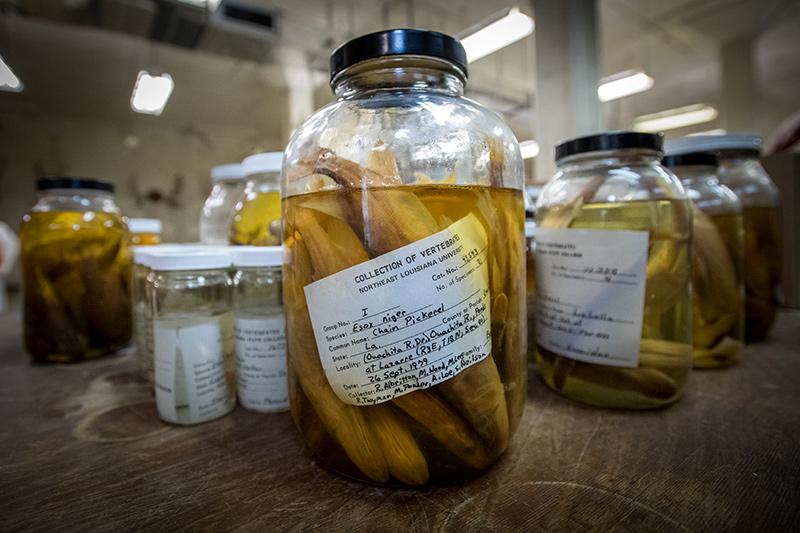Tulane houses largest fish collection of its kind in the world
Located within the Tulane University Biodiversity Research Institute (TUBRI), the Royal D. Suttkus Fish Collection ranges in scale from a meticulously labeled jar of minnows to a tank containing an 8-foot-long shark. The institute is now providing a new home for approximately 85,000 species lots of preserved Gulf Coast fish transferred from the Natural History Museum at the University of Louisiana at Monroe (ULM).
TUBRI is located on the grounds of the F. Edward Hebert "Riverside" Research Center in Belle Chasse, Louisiana.
Ichthyologist Henry L. Bart, Jr., a professor of ecology and evolutionary biology at Tulane, serves as the institute’s director and is currently managing the influx of specimens.
“Tulane has the largest collection of this kind in the world.”
— Henry L. Bart, Jr., director of the Tulane University Biodiversity Research Institute
With more than 7 million specimens already recorded, Tulane has the largest preserved fish collection of its kind in the world.
“TUBRI actually houses more specimens than in the National Museum of Natural History’s fish collection in Washington, D.C.,” said Bart. “We’ve kept this collection, because it’s valuable for research happening here at Tulane. As long as the climate conditions in the building are kept stable, the fish will last in these fluids for about 200 years.”
The collection’s incoming additions were previously housed at ULM within a storage space in Brown Stadium. Moving forward with plans to revamp the athletic complex, ULM decided to divide its scientific specimens among several institutions: Tulane, the University of Texas at Arlington, Mississippi State University and the Botanical Research Institute of Texas.
Bart says that loss of space for specimen collections is an important issue for biodiversity researchers to consider.
“How do you anticipate the loss of space as a community, and what do you do about it? It’s something that has become all too common in the field of biology over the past two decades,” he said.
Bart suggests that researchers should develop a stress test for their facilities to determine when university collections are in jeopardy and to help scientists plan ahead for spatial solutions.
Like this article? Keep reading: Young Tulane scientists get national recognition, support for coastal research

